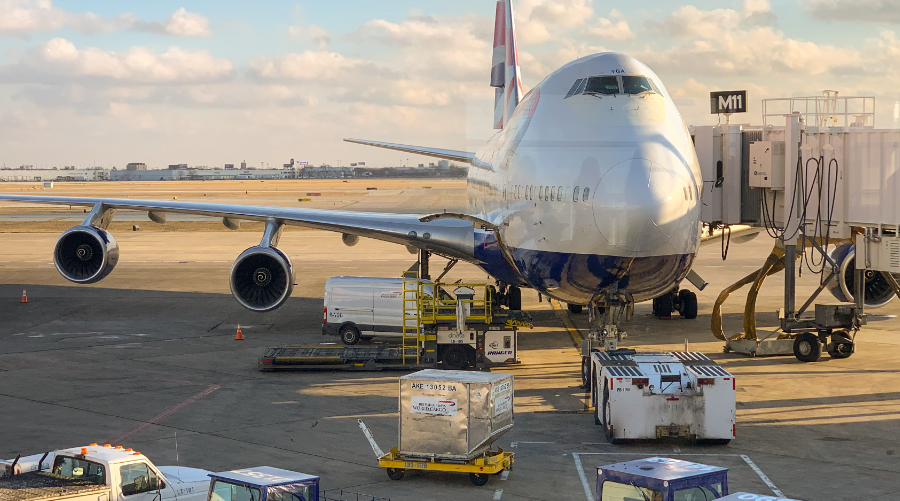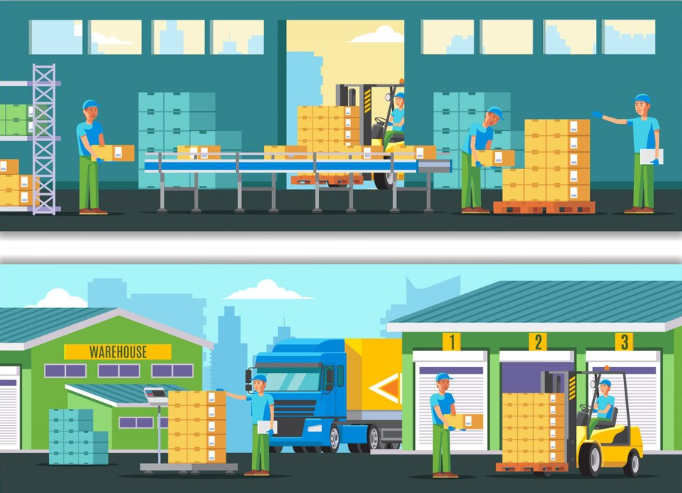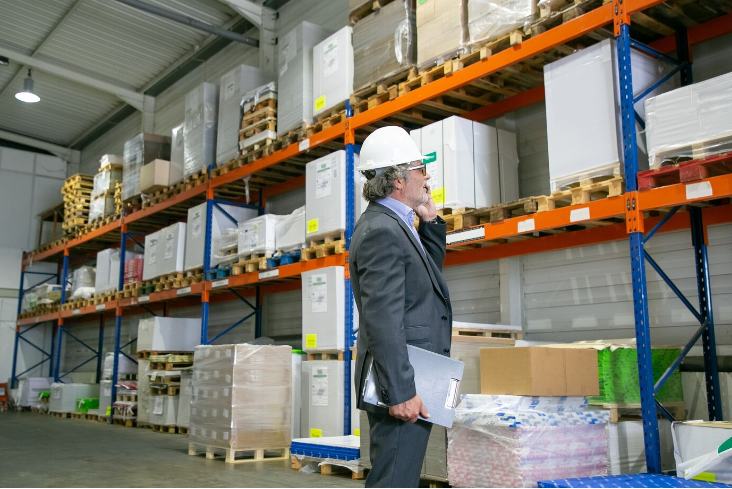Table of Contents
Get Custom eCommerce Fulfillment Service
Book a Meeting
What Is Global Supply Chain
Time: Nov 13,2024 Author: SFC Source: www.sendfromchina.com
Globalization has opened the doors to a world of new opportunities—and challenges—in supply chain management. Today’s global supply chains link markets, materials, and consumers from all corners of the globe, allowing companies to leverage efficiencies and access new markets. But what does it take to build a successful global supply chain in a globalized world?
This guide dives into the core benefits, obstacles, and strategies of global supply chains, equipping you with the insights needed to succeed in today’s dynamic, global economy.

1. What Is Global Supply Chain
The global supply chain encompasses the intricate, interconnected network that enables goods to move from manufacturers to consumers across international borders. It's the backbone of our globalized economy, where raw materials, suppliers, manufacturers, distributors, and retailers work together across vast distances.
Global supply chains are essential to meet the rising demand for products worldwide, linking markets, optimizing production costs, and allowing companies to leverage different countries' resources, skills, and innovations. Businesses large and small depend on these systems for importing goods, managing logistics, and ensuring the timely delivery of products to meet consumer demand.
2. Global Supply Chain Benefits
A global supply chain is not just about moving goods across borders; it’s a strategic asset that brings a range of benefits to businesses of all sizes. By leveraging global suppliers and production facilities, companies can gain competitive advantages that are difficult to achieve with purely local operations. Here are some benefits of global supply chain:
Cost Efficiency and Cost-Effective Sourcing
One of the most significant advantages of a global supply chain is cost efficiency. By sourcing materials or products from countries where production costs are lower, companies can reduce expenses and offer more competitive prices to consumers. Labor costs, material costs, and operational costs vary significantly from one country to another, making it possible for businesses to leverage these cost differentials.
Access to Broader Markets
Operating on a global scale allows businesses to reach markets that would otherwise be inaccessible. Through a global supply chain, companies can distribute their products worldwide, expanding their customer base and increasing revenue. The access also provides resilience, as businesses can rely on alternative markets if demand falls in one region.
Increased Production Capacity and Scalability
With access to resources worldwide, companies can quickly scale their production to meet growing demand. A global supply chain offers the ability to tap into a broader range of suppliers, which enables flexibility and allows companies to increase or decrease production efficiently.
Enhanced Product Diversity
Global supply chains allow businesses to source unique materials and ingredients from different regions, creating opportunities to offer diverse and innovative products. The diversity in products also aligns with consumer demands for choices and niche products.
Innovation and Technological Exchange
Through international partnerships, companies gain exposure to new technologies, processes, and best practices. The exchange of knowledge and skills between countries helps businesses innovate, improve product quality, and increase efficiency, thereby giving them a competitive edge in the global market.
Improved Resource Allocation
By tapping into global networks, companies can allocate resources more effectively. For example, a company may procure high-quality raw materials from one country and assemble products in another, where manufacturing expertise is stronger or labor costs are lower.
3. Challenges of Global Supply Chain

While a global supply chain offers numerous benefits, it also presents unique challenges that require strategic management and advanced technology solutions.
Complex Regulatory Compliance
Navigating international laws, customs regulations, and trade policies can be complicated. Each country has its own rules regarding tariffs, import/export restrictions, and environmental standards, which can impact the efficiency and cost of cross-border operations.
Supply Chain Disruptions
Global supply chains are vulnerable to a range of disruptions, from natural disasters to political instability and economic downturns. Such events can severely impact the availability of goods, leading to delays, increased costs, and potential stockouts.
Cultural and Language Barriers
Effective communication is crucial for managing international supplier relationships, yet cultural differences and language barriers can pose challenges. Miscommunication can lead to delays, quality issues, and strained partnerships, all of which can disrupt supply chain efficiency.
Complex Logistics and Transportation
The logistics of moving goods across borders is complex and requires precise coordination among multiple parties. Issues such as lengthy shipping times, fluctuating fuel prices, and port congestion can affect delivery times and increase operational costs.
Sustainability and Environmental Impact
The environmental impact of a global supply chain is a growing concern for consumers, regulators, and businesses. Companies are increasingly held accountable for their environmental footprint, requiring them to adopt sustainable practices like reducing carbon emissions, minimizing waste, and opting for eco-friendly materials.
Geopolitics
Geopolitics affects the global supply chain primarily through trade restrictions, regional conflicts, and energy security issues. Political tensions lead to tariffs, sanctions, and regulatory hurdles that disrupt trade flows and increase operational costs for companies reliant on cross-border supply chains. Conflicts in key regions, such as the Russia-Ukraine war and the Hamas-Israel war, create significant delays and impact the availability of critical resources like oil, gas, and agricultural products. This has led companies to re-evaluate their reliance on politically sensitive regions and adopt strategies to diversify and strengthen their supply chain resilience.
In response, businesses are increasingly shifting from globalized supply chains to regionalized or “friend-shored” models, relocating production to politically stable countries or those with strategic alliances. While this reduces exposure to geopolitical risks, it comes with higher costs and logistical complexities. Additionally, national security concerns have led to stricter regulations on technology and data sharing, forcing companies to adapt their operations in ways that safeguard their interests amid a shifting political landscape.
4. Global Supply Chain vs Local Supply Chain

A global supply chain involves sourcing, production, and distribution across multiple countries, often leveraging cost efficiencies, diverse resources, and specialized expertise available in different regions. Global supply chain allows companies to access broader markets, reduce manufacturing costs, and source specific materials or products unavailable locally. However, global supply chains are complex and subject to risks such as geopolitical tensions, exchange rate fluctuations, and lengthy shipping times, making them more vulnerable to disruptions from international events like trade disputes or natural disasters.
In contrast, a local supply chain is geographically concentrated, typically within a single country or region, reducing reliance on international logistics. Local supply chains can offer greater agility, quicker response times, and more control over production processes, making them less susceptible to global disruptions. Although they often come with higher production costs due to limited economies of scale and fewer resource options, local supply chains can enhance resilience, sustainability, and support local economies. This model is often chosen by businesses prioritizing speed, reliability, and regional market demand over global scale efficiencies.
5. How to Run a Successful Global Supply Chain

To succeed in global supply chain management, companies need robust strategies and flexible frameworks that respond to the complexities of international trade.
Establishing Strong Supplier Relationships
Building solid partnerships with suppliers worldwide is essential. A strong relationship improves communication, fosters trust, and helps mitigate issues before they escalate. Companies should regularly audit suppliers for quality, compliance, and ethical standards to maintain consistent and reliable operations.
Leveraging Technology and Digital Solutions
Digital tools such as supply chain management software, AI-powered analytics, and real-time tracking systems can significantly enhance the efficiency of a global supply chain. These tools allow businesses to monitor shipments, predict demand fluctuations, and improve accuracy in forecasting.
Developing a Robust Risk Management Strategy
To manage risks effectively, businesses must create contingency plans for various potential disruptions, such as natural disasters, political instability, and supply shortages. Establishing alternative suppliers and sourcing regions can help companies respond quickly to issues, minimizing the impact on operations.
Prioritizing Sustainability
A growing number of consumers favor brands that adopt sustainable practices. Companies can make their supply chains more eco-friendly by reducing transportation emissions, optimizing energy usage, and choosing suppliers committed to environmental standards.
Ensuring Compliance Across Borders
A successful global supply chain requires adherence to a multitude of international regulations, ranging from import/export laws to labor standards. Compliance helps avoid legal penalties and fosters a positive brand image. Businesses should stay updated on international trade laws, certifications, and quality standards to ensure full compliance.
6. FAQs
1. What is a global supply chain?
A global supply chain is a network that connects suppliers, manufacturers, and distributors across different countries, enabling companies to source, produce, and distribute goods on an international scale.2. What are the benefits of a global supply chain?
Global supply chains offer benefits such as cost savings, access to broader markets, enhanced product quality, and improved resource allocation.3. What challenges are associated with a global supply chain?
Challenges include regulatory compliance, potential disruptions, cultural differences, complex logistics, and environmental concerns.4. How does a global supply chain differ from a local supply chain?
Global supply chains are larger and more complex, offering cost advantages and flexibility but with higher risks and environmental impacts. Local supply chains are simpler, offer quicker delivery, and have fewer logistical challenges.5. How can businesses build a successful global supply chain?
Businesses can invest in technology, strengthen supplier relationships, implement risk management strategies, focus on sustainability, optimize inventory, and stay compliant with trade regulations. Post Views:2176
Post Views:2176
Copyright statement: The copyright of this article belongs to the original author. Please indicate the source for reprinting.
Previous Post
What Is Lean Logistics? Benefits, Principles, and How to Measure
Next Post
TAGS
Hot Research
Recent News
Get Custom eCommerce Fulfillment Service
Book a Meeting
Get a Custom China Fulfillment Solution with FREE Storage for 30 Days
 Want to know about our services, fees or receive a custom quote?
Want to know about our services, fees or receive a custom quote?
 Please fill out the form on the right and we will get back to you within a business day.
Please fill out the form on the right and we will get back to you within a business day.
 The more information you provide, the better our initial response
will be.
The more information you provide, the better our initial response
will be.





 TAGS:
TAGS: